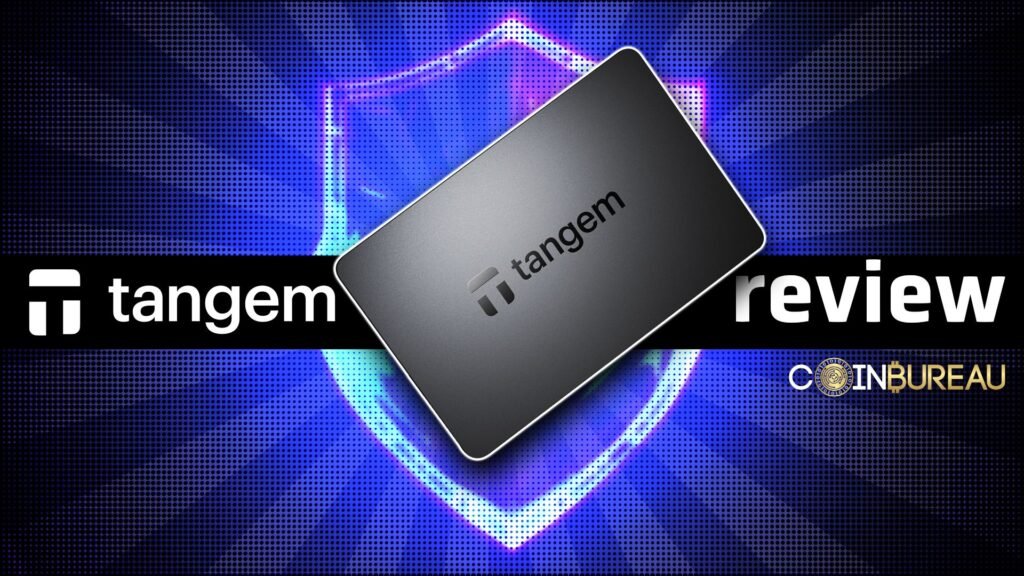
Tangem Wallet: The Future of Secure Crypto Storage
Cryptocurrency has emerged as one of the most innovative financial systems in recent years. With the proliferation of various digital assets like Bitcoin, Ethereum, and countless altcoins, the need for secure, reliable, and user-friendly cryptocurrency storage solutions has never been greater. While software wallets and online exchanges provide users with the convenience of accessing and trading their digital assets, they come with a certain level of vulnerability, particularly in terms of security risks like hacking and phishing attacks.
Enter Tangem Wallet, a hardware wallet that aims to address the inherent security challenges of cryptocurrency storage. This article will explore what Tangem wallet is, how it works, and why it has become a popular choice for crypto enthusiasts who prioritize the safety and security of their digital assets.
What Is Tangem Wallet?
Tangem Wallet is a hardware wallet designed to securely store cryptocurrency private keys offline, making it significantly less vulnerable to online threats like hacking, phishing, and malware. Unlike traditional wallets, which store private keys on digital devices connected to the internet, Tangem Wallet uses NFC (Near Field Communication) technology to store and protect private keys in a physical card.
This approach to crypto storage is a game-changer for those who are looking for a convenient and secure way to manage their digital assets without the risks associated with software wallets and exchange platforms. The Tangem Wallet card, which looks and feels like a typical credit card, is equipped with secure hardware and is specifically designed for users who want to maintain full control over their private keys while ensuring they remain safe and protected from digital threats.
How Does Tangem Wallet Work?
At its core, Tangem Wallet functions as a cold storage solution for cryptocurrency. Cold storage means that the private keys required to access your crypto holdings are never exposed to the internet, minimizing the risk of them being stolen or compromised. The wallet utilizes an NFC-enabled physical card, which is paired with a mobile app on your smartphone for seamless access.
1. Storing Cryptocurrency Keys
The Tangem Wallet stores your private keys securely on the NFC-enabled card, which is designed to function similarly to a traditional bank card. However, unlike regular credit cards, the Tangem Wallet card uses advanced encryption to store cryptographic keys offline, ensuring that your assets remain safe from cybercriminals.
2. NFC Technology
The wallet uses NFC technology to enable communication between the physical card and your smartphone. To access your wallet and sign transactions, you simply tap the card against your phone. This interaction allows you to manage and transfer your cryptocurrency, such as Bitcoin or Ethereum, in a secure and user-friendly manner.
3. Mobile App Integration
Tangem Wallet works in conjunction with a mobile app that acts as an interface for managing your digital assets. The app is designed to be intuitive and easy to use, allowing you to view your portfolio, check balances, and send or receive funds with just a few taps. The integration with the app also ensures that you can easily back up your wallet and restore it if needed, using simple security measures like a recovery phrase or PIN code.
4. Private Key Security
One of the most crucial aspects of Tangem Wallet’s security is the way it protects your private keys. The wallet ensures that your private keys are never exposed to the internet or any third-party service. Because the private keys are stored on the card itself and are not accessible via any online connection, this greatly reduces the potential attack surface for hackers.
Why Tangem Wallet Stands Out
1. Enhanced Security
Tangem Wallet is designed to address the primary security concerns of cryptocurrency users. Traditional software wallets or exchange platforms are vulnerable to hacking attacks, where hackers can gain access to users’ private keys and steal their crypto assets. By using NFC technology and offline storage, Tangem Wallet eliminates the risk of online breaches and offers a more secure solution for storing digital assets.
The card is equipped with secure chips that store private keys in a protected environment, ensuring that they are not exposed to potential risks like phishing scams, malware, or keylogging software that could otherwise compromise your keys.
2. Convenient and User-Friendly
One of the key selling points of Tangem Wallet is its user-friendly interface. Setting up and using the wallet is simple, even for beginners. The NFC card is easy to use – simply tap it against your smartphone to interact with the wallet. The mobile app provides a seamless way to manage your digital assets and perform transactions without the complexity of traditional cold storage solutions like hardware wallets that require additional cables or adapters.
3. Backup and Recovery
Tangem Wallet allows users to back up and restore their wallet easily in the event of card loss or damage. In addition to storing private keys on the NFC card, users can back up their assets using a recovery phrase or PIN code. This ensures that even if the card is lost or stolen, you can still restore your wallet and access your funds securely.
4. Multi-Currency Support
Tangem Wallet supports a wide range of cryptocurrencies, including popular ones like Bitcoin (BTC), Ethereum (ETH), and other altcoins. The wallet allows users to store multiple digital assets in one place, making it a versatile option for people who manage a diverse portfolio of cryptocurrencies.
5. Compact and Durable Design
Tangem Wallet’s design is sleek, compact, and durable. The card is credit-card-sized, making it portable and easy to carry around in your wallet or pocket. The sturdy design ensures that the card will withstand everyday wear and tear, providing long-term protection for your assets.
Pros and Cons of Tangem Wallet
Pros:
- Enhanced Security: Tangem Wallet offers one of the most secure ways to store crypto by utilizing offline cold storage and NFC technology.
- User-Friendly Interface: The app and card are easy to set up and use, making it a great option for beginners.
- Backup and Recovery: The wallet offers backup options to ensure your assets remain safe, even in case of loss or damage.
- Multi-Currency Support: Tangem Wallet supports a variety of cryptocurrencies, allowing you to manage multiple assets in one wallet.
- Compact and Durable: The wallet is portable, easy to carry, and designed to withstand everyday usage.
Cons:
- No Built-in Screen: Unlike some hardware wallets, Tangem Wallet does not have a built-in screen for reviewing transactions directly on the device, relying instead on the mobile app.
- Limited Advanced Features: While Tangem Wallet is perfect for basic crypto storage, it may not offer the advanced features found in other wallets for more experienced users.
Conclusion
Tangem Wallet is a cutting-edge hardware wallet that provides a secure, convenient, and user-friendly solution for storing cryptocurrencies. By utilizing NFC technology and offline cold storage, Tangem Wallet addresses the security concerns faced by cryptocurrency users while offering a simple, intuitive experience. Whether you’re new to the world of cryptocurrency or a seasoned investor, Tangem Wallet provides peace of mind knowing that your assets are safe from online threats and hacks

